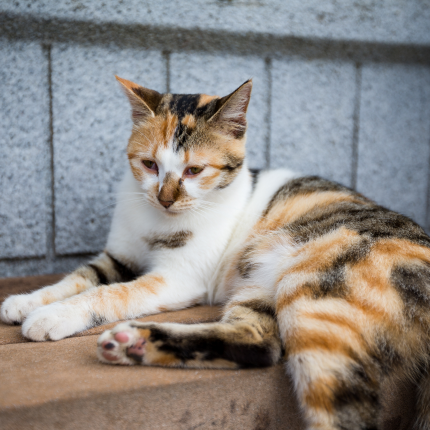Ensuring the Well-being of All Cats: Stray, Feral, and ‘Outdoor Cats’

Like our canine companions, cats that roam outdoors without supervision are exposed to many risks, including traffic accidents, confrontations with other animals, human cruelty, and diseases. Sadly, some cat owners fail to grasp the importance of engaging with their cats, offering meaningful interactions, and providing them with a stimulating indoor environment, resulting in a bored cat who looks to the outdoors for fulfillment. Responsible pet guardianship involves safeguarding our animal friends from the dangers they face when unattended outdoors. If you wish for your feline companion to enjoy a long, healthy life, the best course of action is to ensure their safety indoors with you.
Life Expectancy of an ‘Outdoor Cat’
Indoor cats typically live to be about 12 to 20 years old, while outdoor cats often do not make it past five years. For outdoor cats, traffic accidents are the most common cause of premature death. However, there are many other dangers they must contend with. Some people do not want cats in their yards due to concerns over urination, defecation, digging, plant damage, or predation on birds and wildlife. Unfortunately, these individuals may resort to harming outdoor cats.
Furthermore, outdoor cats face an elevated risk of contracting various diseases. Feline leukemia, feline AIDS, feline infectious peritonitis (FIP), toxoplasmosis, distemper, and rabies are challenging to detect, not to mention, in the case of FIP and distemper, impossible to test for. Some diseases are highly contagious and can quickly spread to other pets.
‘Outdoor Cats’ and Wildlife
Allowing cats to roam freely outdoors is also unfair to local wildlife. Cats are invasive, non-native predators. While your cat may occasionally bring home a mouse or bird, this likely represents only a fraction of the animals they have hunted. Studies have shown that cats with video cameras around their necks kill an average of 2.1 animals each week but bring home less than one out of every four. Research by the Smithsonian Conservation Biology Institute estimates that free-roaming cats kill 2.4 billion birds and 12.3 billion mammals per year in the United States.
Are ‘Outdoor Cats’ Happier?
Cats are happier and healthier when they are safe and live indoors. If your cat is eager to explore the outdoors, you can provide supervised outdoor experiences, such as walks on a leash with a well-fitted cat harness. However, not all cats will adapt to a harness and leash. Consider providing a window perch or a catio (a cat patio) in such cases. Cat Fence-In Barrier Kits, flexible mesh barriers atop privacy fences, can also help keep your feline friends secure in your yard.
Should I Let My Cat Outside?
We strongly encourage everyone to prioritize the safety and well-being of their companion cats by keeping them indoors, except when supervised outdoors with a harness and leash or within a designated catio. Our animal companions depend on us to ensure their safety and happiness.
What to Do if You Encounter a Stray, Homeless, or Feral Cat
The streets are not a suitable environment for cats. If you encounter a stray, homeless, or feral cat (or any other animal in distress), please follow the guidelines on Alley Cat Allies to secure their safety. You can contribute to reducing the number of homeless cats in your community by advocating for spay/neuter laws and affordable spay/neuter services and encouraging everyone you know to keep their cats indoors.
Cats are cherished companions, integral members of our families, and a lifelong commitment. Like dogs, they should be licensed, subject to “leash laws” (i.e., required to remain indoors unless accompanied), and, most importantly, spayed or neutered. These measures are essential for addressing the pervasive crisis of homeless cats.

Featured Articles

Polydactyl Cats: Just More Beans to Love
Polydactyl cats have become extremely popular in recent times. As a result, more and more people are interested in learning more about this six-toed cat and want to get one of their own. If you are a cat lover intrigued by polydactyl cats, you have come to the right place….

The Odd-Eyed Cat (AKA Heterochromia)
Cats are already beautiful and fascinating creatures, but people are bound to take notice when they have something as captivating as two different colored eyes. Odd-eyed cats always have one blue eye paired with either a green, yellow, or brown eye. This form of heterochromia occurs in other animals, including…

Why Do Cats Roll Over Into Their Backs But Not Let You Touch Their Bellies?
It’s common knowledge dogs love to have their tummies rubbed when they freely lay down before you and roll onto their backs. But, if you’re also familiar with cats, you know that when they roll onto their backs with their bellies exposed, rubbing the belly will most likely result in…
